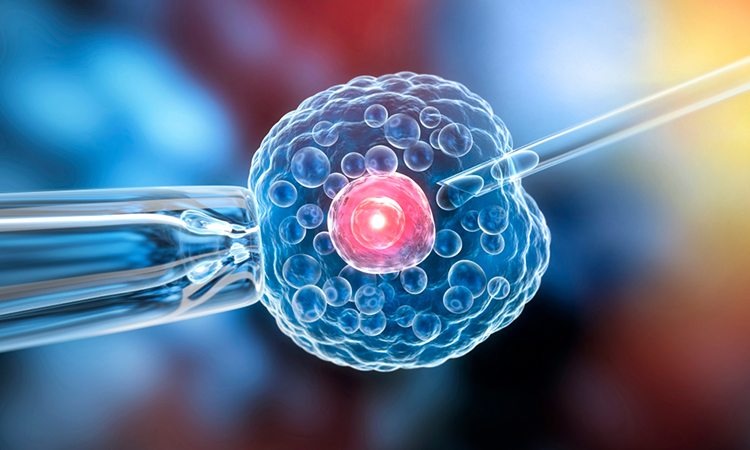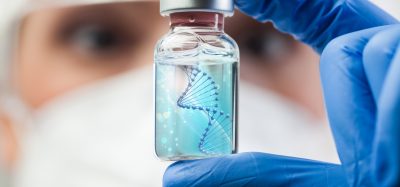Cell line development tactics and strategies for faster Investigational New Drug timelines
Posted: 26 April 2022 | Soojin Han (Samsung Biologics America) | No comments yet
Complexities related to the development of stable cell lines and increased risk of contamination in upstream and downstream processes, have led many developers to seek critically needed expertise from external partners. Soojin Han, Samsung Biologics America, offers an expert look at the various challenges and tactics that can be applied.


With demand for cell line development (CLD) currently growing at a double-digit compound annual growth rate (CAGR), the market for CLD services is expected to reach $1.7 billion by 2028.1 This can be attributed to the growing demand for bispecific and monoclonal antibodies (mAbs), recombinant proteins and vaccines needed to treat oncological, autoimmune and infectious diseases.
Exciting technological advancements in cell line engineering and development, as well as emerging screening techniques and process development paradigms, are also set to fuel growth opportunities for the market.
Complexities related to the development of stable cell lines and increased risk of contamination in upstream and downstream processes have led many developers to seek critically needed expertise from external partners. To help understand the dynamics of this crucial first step in biopharmaceutical development, Soojin Han, a Head of R&D at Samsung Biologics America, offers an expert look at the various challenges and tactics that can be applied. Contract development and manufacturing organisations (CDMOs) can shorten commercial timelines and increase programme efficiencies without sacrificing product quality or yield, by understanding and using best practices.
The need to strategically accelerate CLD
Although the capabilities of biopharma’s contract development organisation (CDO) partners are continually advancing, in the context of overall development, CLD remains both technically and operationally challenging to accomplish.
Current CLD best practices still rely on a series of labourious, manual and time-consuming processes. For example, gene integration using selection markers requires extensive screening of thousands of clones. Even with well-established automated platforms it invariably takes at least three months to complete CLD on the road to an Investigative New Drug (IND) filing.
By optimising the protein expression platform and developing new production cell lines to accommodate fast-track approaches, many of these challenges can be overcome to deliver important drugs to patients faster. For biopharma’s CDO partners, the technical innovation and operational excellence needed to achieve shortened timelines will continue to play an increasingly significant role as the demand for development efficiency persists.
Striving for a robust CLD programme
The CLD process requires optimisation to increase specific productivities of difficult-to-express proteins and improve cell growth and viability for commercialisation. This will need to be achieved while delivering the same lab-proven stability and product quality.
A robust CLD program can offer developers key elements to start future programmes more effectively, regardless of partner or strategy. These elements include:
- Tight collaboration among key project stakeholders: Collaboration helps to build a thorough understanding of programme needs, as well as the characteristics of the molecule
- A stronger, more viable CLD strategy with readily available data: Drug programmes are more likely to be successful in meeting challenging end goals and project timelines when critical data is accessible and sharable
- Real-time project transparency: The development of organised, well-defined communication and issue-resolving protocols can be achieved more easily.
When developing a CLD programme, balancing speed and quality is critical. The fastest process capable of achieving IND approval while providing a high titer, product quality and maintaining regulatory compliance must be identified. Although balancing these requirements is no easy task, introducing new screening technologies, optimising cell culture conditions and developing new cell lines can help maximise CLD output and fast-track timelines.
Identifying the best cell line for efficient antibody CLD
When developing and manufacturing biologics, several types of expression host systems besides mammalian cell lines could be used, including bacterial or fungal cells. However, their potential for success in CLD and production of complex biologics like bispecific antibodies or mAbs is often not as high relative to Chinese Hamster Overy (CHO) cell line platforms.
Mammalian cells provide unique characteristics to the molecule, which cannot be mimicked by a lower level of organisms.
- Glycosylation: Glycans attached to mAbs play a key role in their pharmacokinetics, efficacy and safety,2 but this important post-translational modification (PTM) cannot be achieved by bacterial or any other prokaryotic cells
- Folding and assembly: Mammalian cells are more likely to correctly fold and structurally assemble human proteins such as mAbs than certain other types of cells2
- Bond formation: Formation of the disulfide bonds of antibodies requires oxidising conditions, but in gram-negative bacteria (eg, Escherichia coli) the production of these proteins in the reducing cytoplasmic compartment results mostly in non-functional aggregates.2
There will be no viable product without correct protein folding, assembly and PTMs properly. Therefore, it is of utmost importance to use a cell line that is reliable and well-characterised to avoid wasting time fixing issues that may arise from poor expression, folding and assembly later in the process. Reliable CHO cells lines are the ideal cell system to produce a variety of therapeutic proteins, including mAbs and bispecific antibodies and they have many advantages:
- Culture of CHO is relatively easy: CHO cells grow well as suspension cultures with high tolerance in various culture conditions (such as pH, temperature, pressure). These features mean CHO is ideal for scalable manufacturing. The growth conditions used are also easily adaptable (eg, can be grown without serum) in suspension, improving safety and stability profiles.
- High productivity: CHO cell lines can be optimised and engineered to produce a high yield and good quality of recombinant proteins
- Simple selection system: The protein of interest can be easily selected in CHO cell lines by a dihydrofolate reductase (DHFR) or Glutamine synthase (GS) deficiency
- Capable of PTM: CHO cells can produce biosimilar human products with excellent biocompatibility and pharmaceutical activity by performing PTMs that are similar to those in humans
- Well-characterised: As the CHO platform has been widely understood and characterised for many years, there are many tools available for CHO cell engineering
- Recognised by the US Food and Drug Administration (FDA): Having been used for nearly 50 biotherapeutics already approved in the US and EU, CHO cells have the advantage of being well-recognised by regulatory bodies.
Techniques for accelerating CHO CLD
Offering an advanced cell line to customers and integrating it into the CLD process is key to a high-quality and effective CLD process that is both fast and efficient. There are many techniques CDMOs could utilise to accelerate CLD.
High-throughput technologies, such as affinity capture technologies, can be used to accelerate cell isolation, screening and selection by making the process fully automated. Sorting using single-cell printing techniques and advanced artificial and machine learning automation could further increase the speed of production”
Proprietary CHO cell lines
Many CDMOs are now developing and engineering their own proprietary CHO cell lines to achieve robust cell growth, improve high recombinant protein yield and specific productivity.
Optimising upstream processes
CDMOs need to start CLD and production from a position of strength. Before implementing new techniques and methods to increase efficiency, manufacturers must have strong upstream process foundations.
This includes optimising cell culture processes for the large-scale production of proteins. Successfully optimising with the aim of high specific growth rates and cell densities can result in a high specific production rate for the expression and secretion of the qualified protein.
The use of customised cell culture media to stabilise cell lines and prepare the molecule and formulation for commercial manufacturing will also mean CLD is starts on a strong footing.
Capacity, technology and facilities
Access to high-throughput tools, advanced analytical technologies and current good manufacturing practice (cGMP) environments can rapidly accelerate CLD programmes.
High-throughput technologies, such as affinity capture technologies, can be used to accelerate cell isolation, screening and selection by making the process fully automated. Sorting using single-cell printing techniques and advanced artificial and machine learning automation could further increase the speed of production.
Establishing appropriate technologies and system suppliers can help streamline early-stage development and enable a smooth transition to manufacturing and scale-up.
Keeping IND and Biologic License Application (BLA) in mind
With differing and competing priorities at each phase of CLD to consider, it can be easy to lose sight of the larger IND and BLA development goals. All aspects of the product lifecycle need to be considered from the onset. This will mean identifying areas for optimisation early and determining potential time-saving elements such as parallel processing opportunities. This will help to avoid false starts and retracing steps.
Outsourcing CLD to form strong development programmes
By working with a single, end-to-end CDMO partner, disconnects or operational gaps between the different stages can be limited or eliminated. Increasingly, the best performing development programmes come because of outsourcing CLD to strong partners that fit the molecule best.
Conclusion
All areas play a key role in shortening the timeline to market and all must be carefully optimised to achieve the fastest delivery possibly. If developers or manufacturers are overly focused on a particular aspect or analytical area, it may not be the best answer relative to the overall delivery of cell line. This is what sets leading CLD service providers apart – the expertise across all fields that fuels programme development and accelerates commercial timelines. An overarching focus on CLD integration delivers faster more efficient paths to IND filing.
About the author
Soojin Han has more than 10 years of cell line development experience and four years of gene therapy experience. In 2021, Soojin joined Samsung Biologics’ San Francisco R&D Center as Director of the CLD Group. Before joining Samsung Biologics, she led the cell line development and upstream groups in MedImmune, AstraZeneca and Kite, a Gilead company. She earned her PhD in Biochemistry and Molecular Biology from Hanyang University.
References
- Markets R. Global $1.7 Billion Cell Line Development Services Markets, 2020-2028 – Advanced Technologies for Screening, Cell Line Engineering and Bioprocessing [Internet]. Prnewswire.com. 2022 [cited 26 April 2022]. Available from: https://www.prnewswire.com/news-releases/global-1-7-billion-cell-line-development-services-markets-2020-2028—advanced-technologies-for-screening-cell-line-engineering-and-bioprocessing-301154707.html
- Frenzel A, Hust M, Schirrmann T. Expression of recombinant antibodies. Front Immunol. 2013;4:217. Published 2013 Jul 29.
Related topics
Antibodies, Antibody Discovery, Biopharmaceuticals, Biotherapeutics, Cell Cultures, Cell Line Development, Disease Research
Related organisations
Samsung Biologics America, US Food and Drug Administration (FDA)








